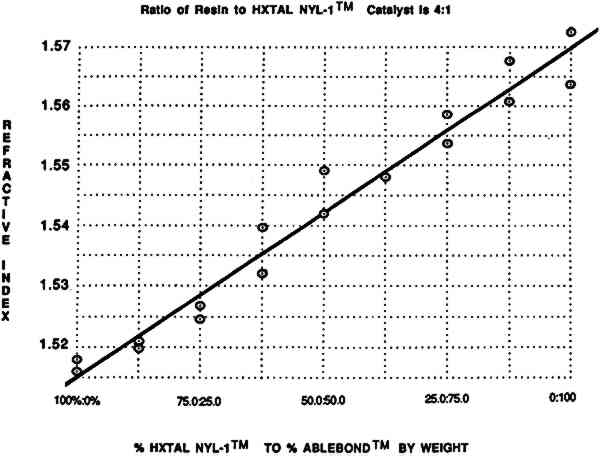CONTROLLING THE REFRACTIVE INDEX OF EPOXY ADHESIVES WITH ACCEPTABLE YELLOWING AFTER AGINGCHRISTOPHER C. AUGERSON, & JOHN M. MESSINGER
3 RESULTSAll samples prepared were found to harden into rigid solid blocks as expected (manual flexing could not crack the blocks and a fingernail could not dent them). 3.1 INDEXES OF REFRACTION
Figure 1 illustrates the data for the initial measurements of refractive indexes of the different adhesive mixtures (prior to the aging period).
3.2 CHARACTERISTICS AFTER ONE YEAR OF DARK AGINGAfter aging, no change in the refractive index could be observed beyond the limits of accuracy of the Abbe refractometer. At values calculated from the UV-visible absorbance of the adhesives after aging were, in all cases, acceptable according to the criteria set forth by Down (1984) (At > 0.1). In general, adhesives tended to become more yellow with increased concentration of Ablebond resin. For the mixtures containing only 12.5% Ablebond resin (87.5% HXTAL NYL-1 resin), the yellowing was quite negligible, with At = 0.0063. The single most yellowed sample, which was one of those containing 100% Ablebond resin, was still quite acceptable, with At = 0.0277. |
